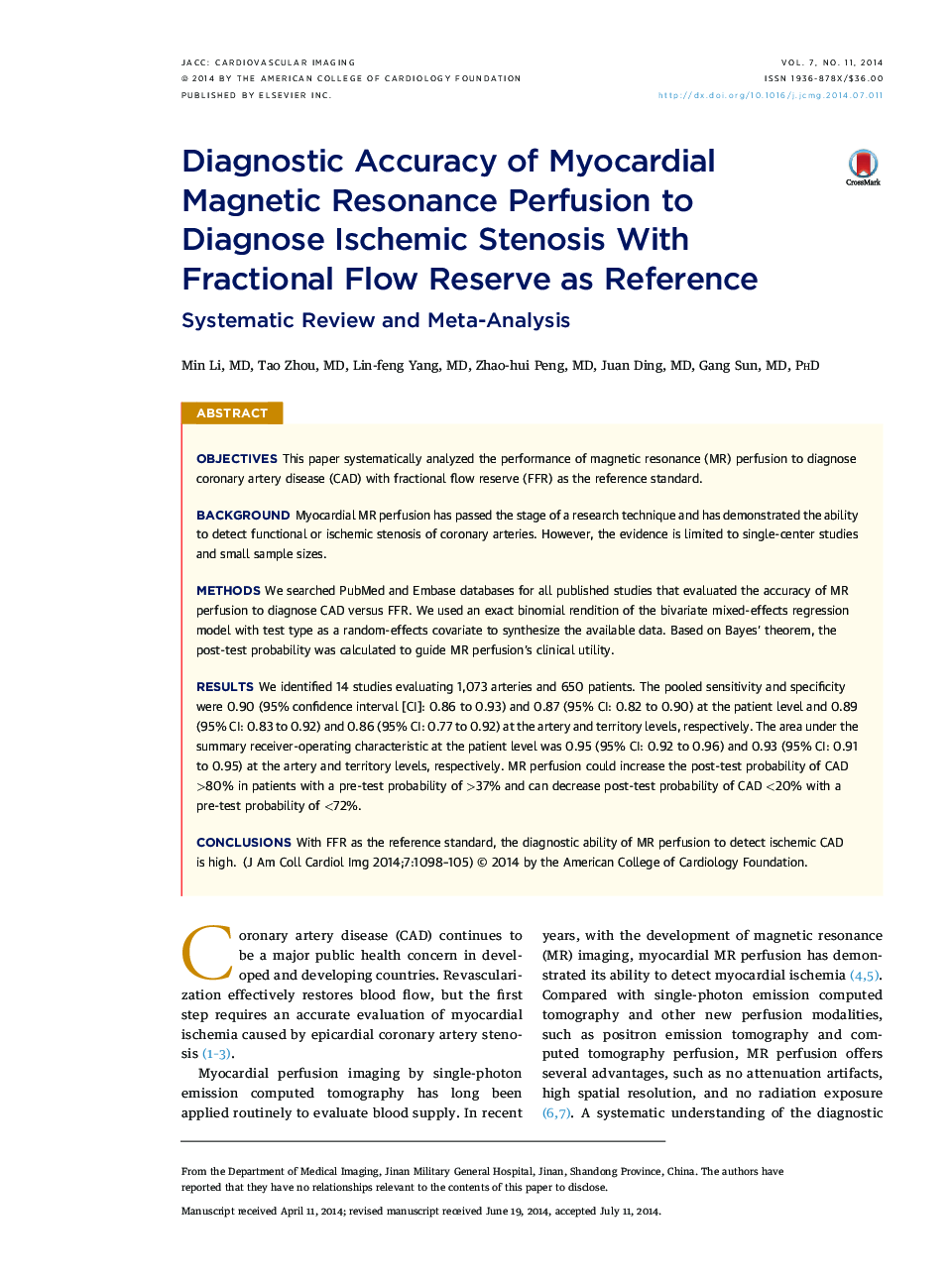| Article ID | Journal | Published Year | Pages | File Type |
|---|---|---|---|---|
| 5980354 | JACC: Cardiovascular Imaging | 2014 | 8 Pages |
ObjectivesThis paper systematically analyzed the performance of magnetic resonance (MR) perfusion to diagnose coronary artery disease (CAD) with fractional flow reserve (FFR) as the reference standard.BackgroundMyocardial MR perfusion has passed the stage of a research technique and has demonstrated the ability to detect functional or ischemic stenosis of coronary arteries. However, the evidence is limited to single-center studies and small sample sizes.MethodsWe searched PubMed and Embase databases for all published studies that evaluated the accuracy of MR perfusion to diagnose CAD versus FFR. We used an exact binomial rendition of the bivariate mixed-effects regression model with test type as a random-effects covariate to synthesize the available data. Based on Bayes' theorem, the post-test probability was calculated to guide MR perfusion's clinical utility.ResultsWe identified 14 studies evaluating 1,073 arteries and 650 patients. The pooled sensitivity and specificity were 0.90 (95% confidence interval [CI]: 0.86 to 0.93) and 0.87 (95% CI: 0.82 to 0.90) at the patient level and 0.89 (95% CI: 0.83 to 0.92) and 0.86 (95% CI: 0.77 to 0.92) at the artery and territory levels, respectively. The area under the summary receiver-operating characteristic at the patient level was 0.95 (95% CI: 0.92 to 0.96) and 0.93 (95% CI: 0.91 to 0.95) at the artery and territory levels, respectively. MR perfusion could increase the post-test probability of CAD >80% in patients with a pre-test probability of >37% and can decrease post-test probability of CAD <20% with a pre-test probability of <72%.ConclusionsWith FFR as the reference standard, the diagnostic ability of MR perfusion to detect ischemic CAD is high.
